Best entry-level gravel bikes 2025: Versatile bikes to head off-road
New to gravel? Here are our top picks for entry-level gravel bikes in 2025 for commuting, adventure riding, and off-road fun
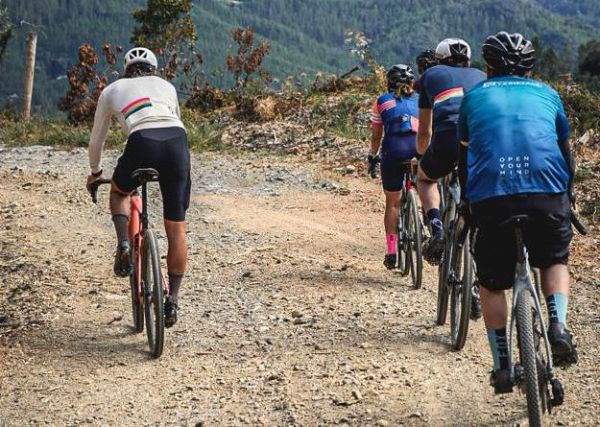
The best entry-level gravel bikes offer a proper taste of what gravel riding is all about, without having to invest in an expensive, premium bike. 'Entry level' means solid, well-rounded bikes that enable novice rider to get out there and explore the different avenues of gravel riding.
We're well aware that best gravel bikes are expensive for riders just starting out. So this guide, we've selected the gravel bikes that offer the best balance of capability, upgrade potential, and long-term value. To be clear, these are not the best budget gravel bikes, rather these are bikes we've tested to perform across bikepacking adventures to gravel bike racing or just exploring off the beaten road closer to home.
We’ve focused on models that inspire confidence and are versatile right out of the box, while also giving you a foundation to grow as a gravel bike rider—whether that’s by upgrading to one of the best gravel cycling wheels, or fitting out for longer bike packing adventures. The Cannondale Topstone 2 tops our list thanks to its stable geometry, Shimano GRX groupset, and decades of aluminium frame expertise behind it.
You’ll find the full list of recommendations just below. If you’re not quite sure what to look for yet, scroll to the bottom for our How to Choose and Everything You Need to Know sections, where we break down sizing, spec, wheel options, and more.
Quick list
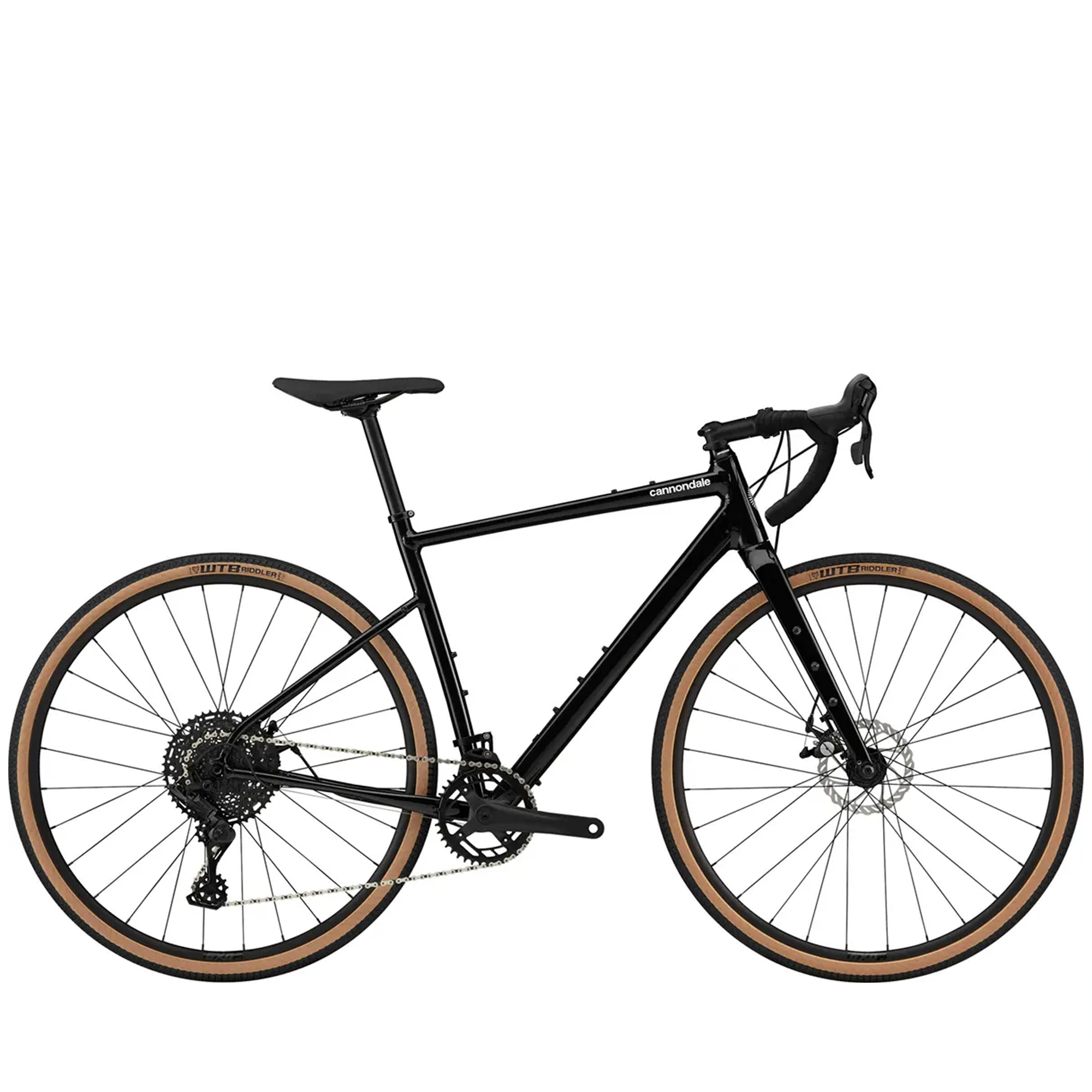
Cannondale's Topstone 2 is a remarkably versatile gravel bike offering an endurance-focused frame with a wide gear range and off-road capability. It's great value too.
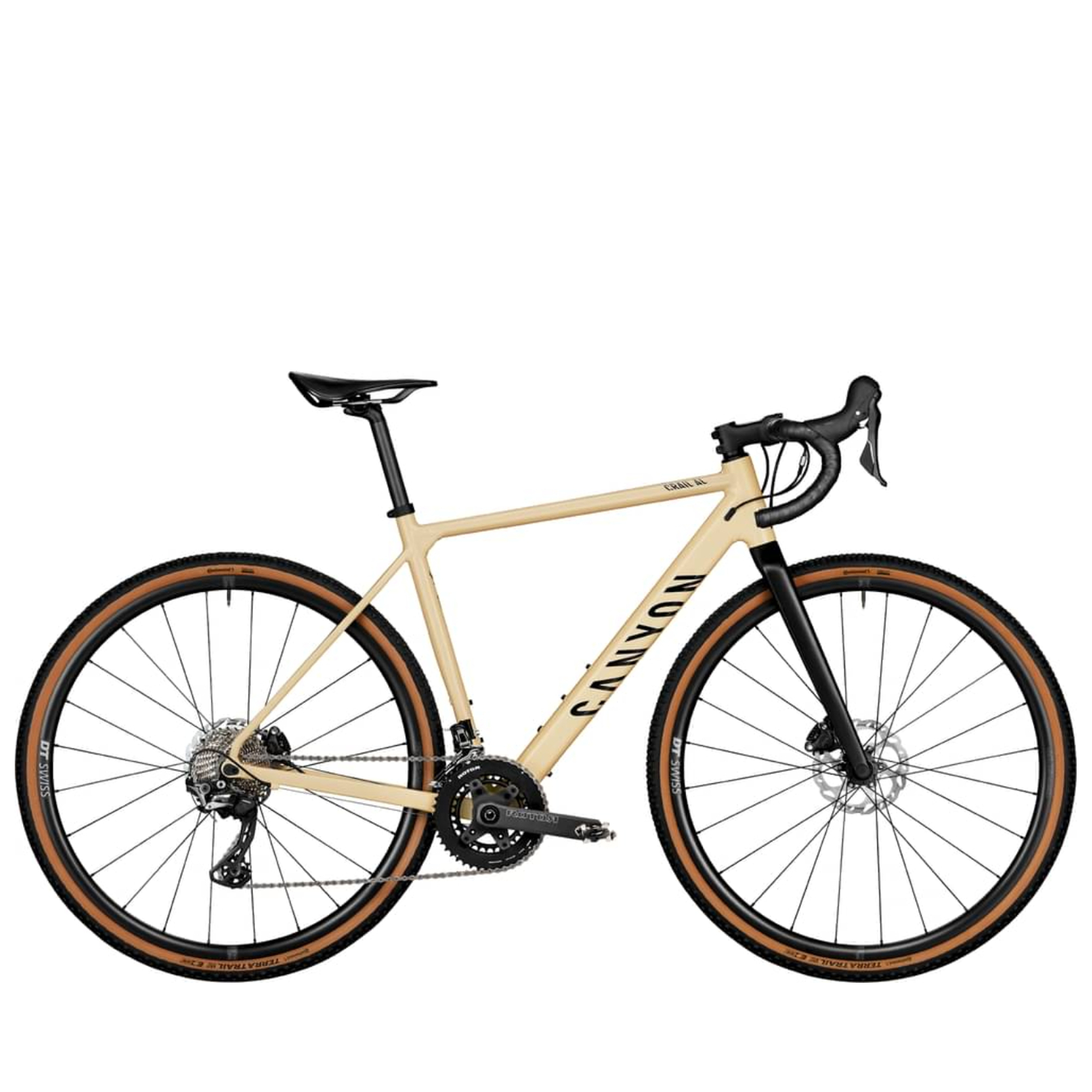
With top-tier GRX components, great climbing gears, and superb comfort, we think the Canyon Grail 7 is the best value for beginners looking to explore rougher roads.
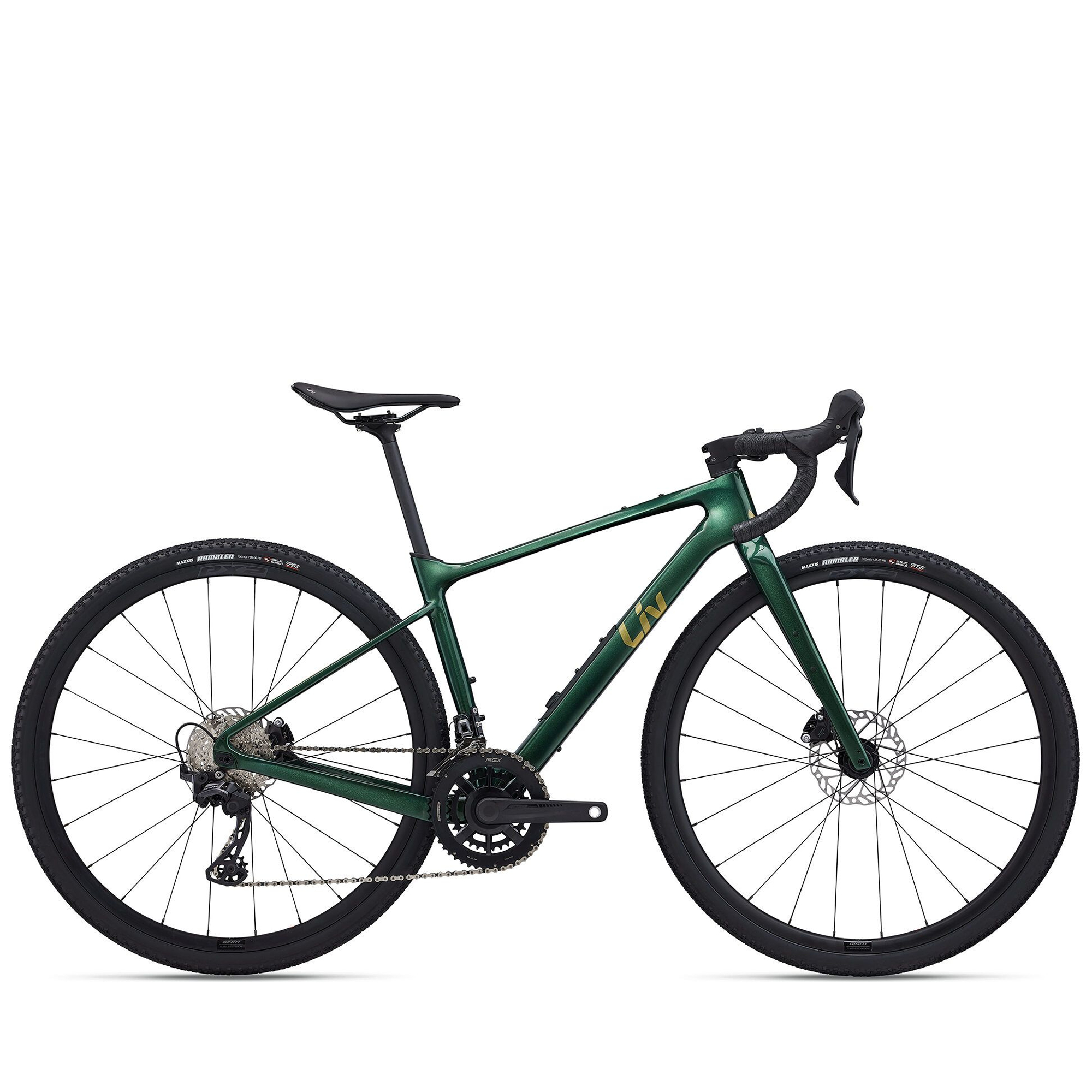
The Devote Advanced 2 offers tailored geometry, premium comfort and off-road versatility for women looking to explore everything from bikepacking to gravel racing.
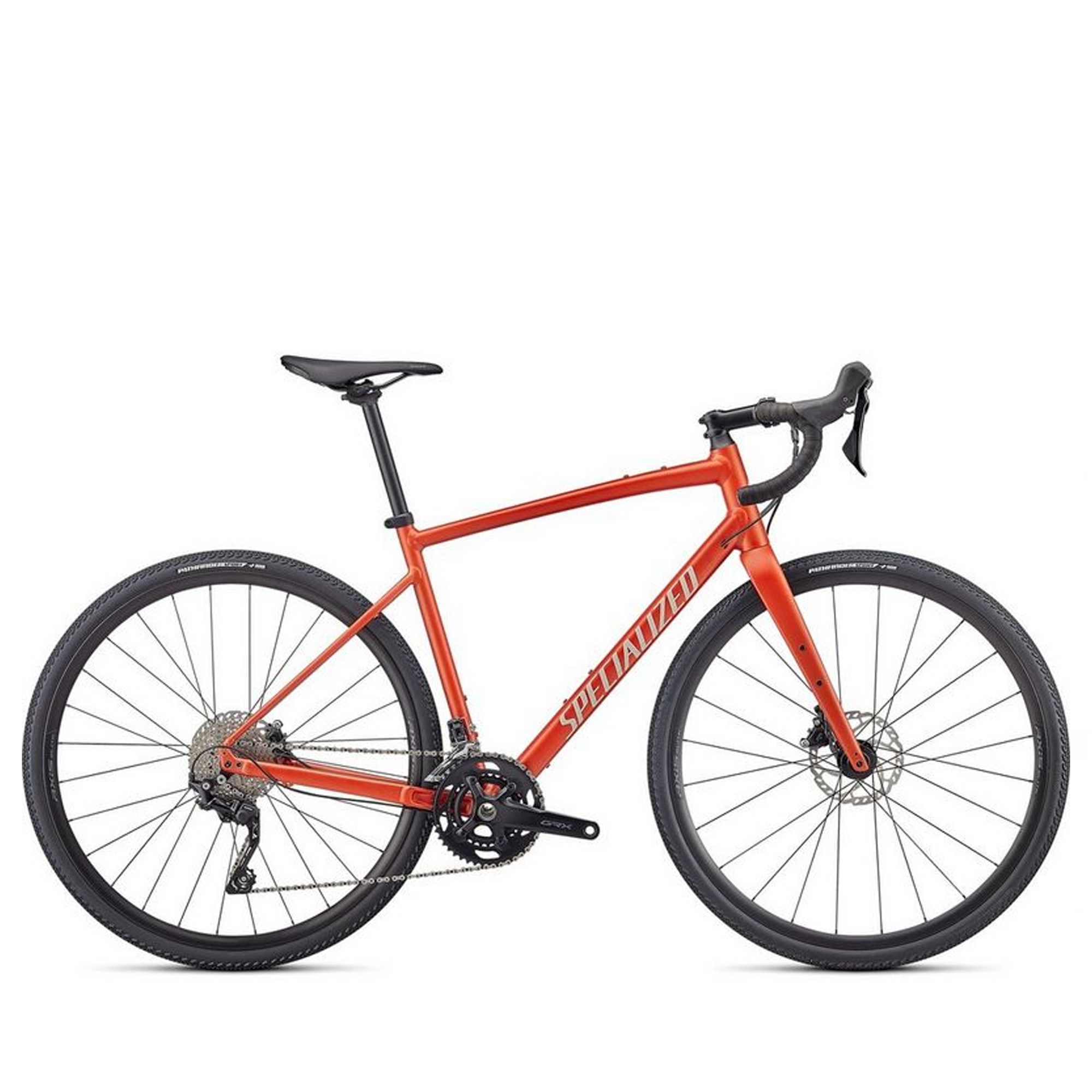
The Specialized Diverge Comp E5 is a do-it-all gravel bike with Future Shock front suspension for added comfort on rough terrain. With an alloy frame, carbon fork, and extensive mounting options, it's ideal for long-distance bikepacking adventures.
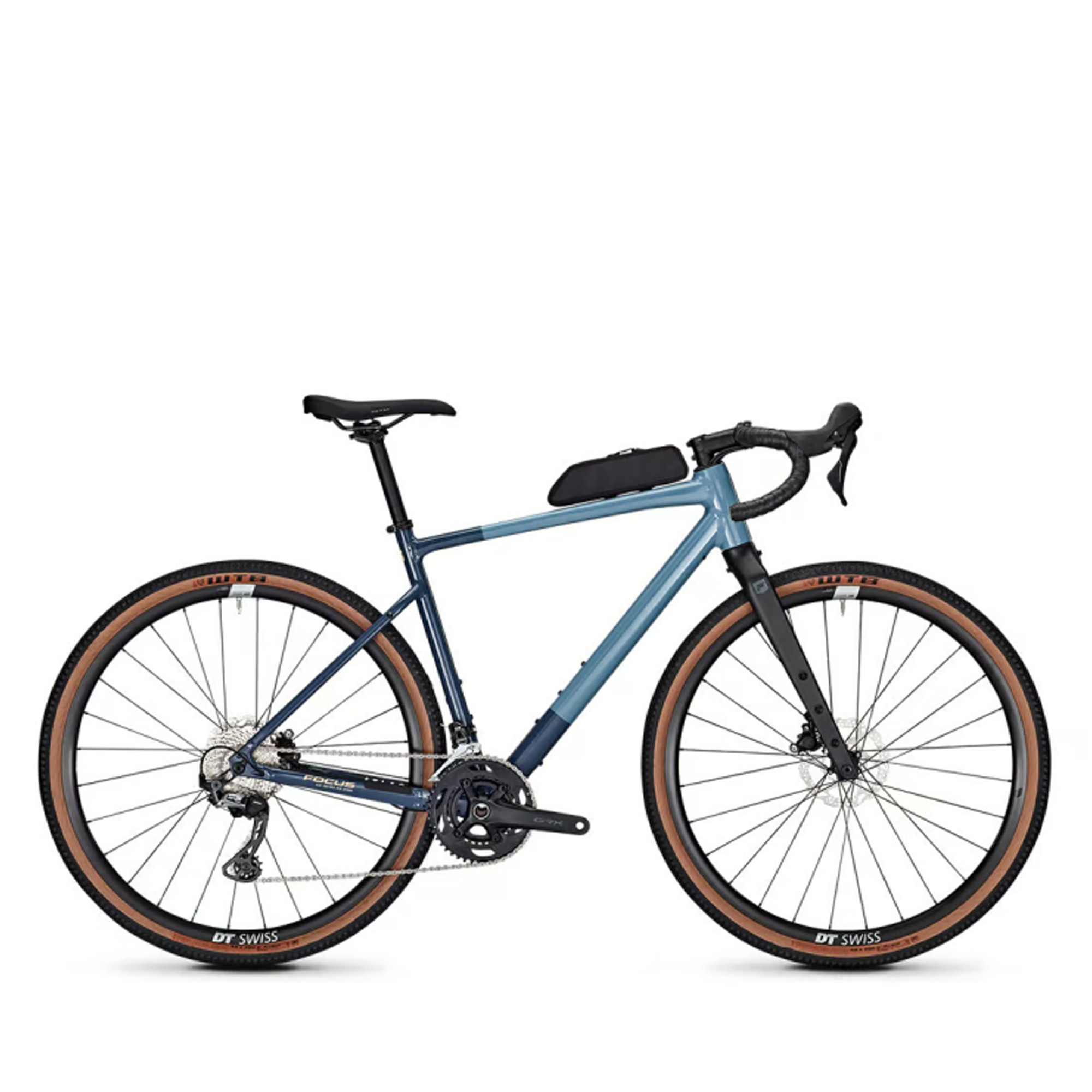
The Focus Atlas 6.8 is a smooth, stable gravel bike that’s built for comfort, versatility, and long-distance adventure.
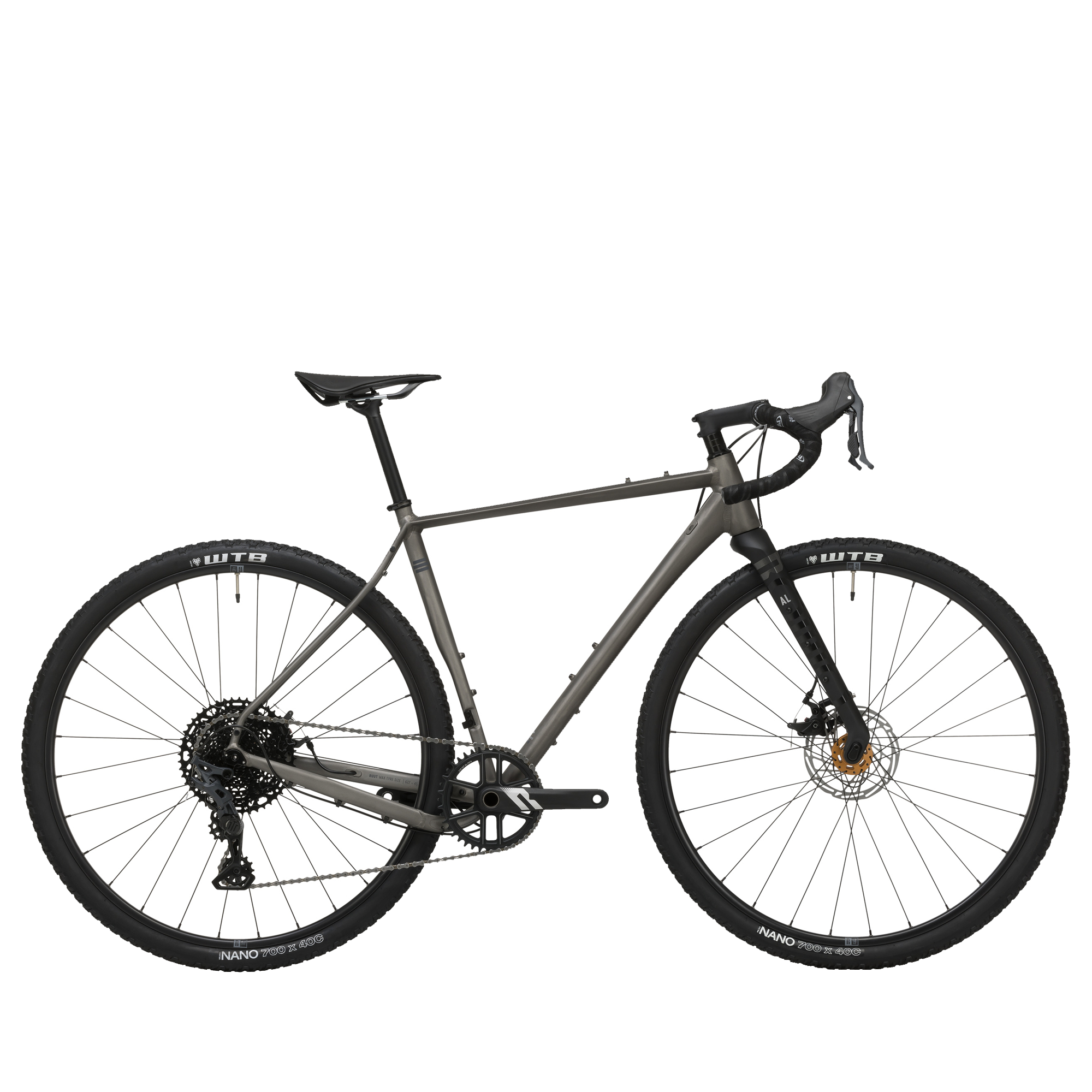
The Rondo Ruut AL3 is an aluminium gravel bike with unique swappable geometry, offering flexibility for both fast rides and off-road stability.
Last updated on 24th of April 2025
The guide was updated ensuring that all the entry-level gravel bikes are current and available. Buy if/Don't buy if" sections were added to highlight the pros and cons of each gravel bike. A "How to choose" section was also added to provide readers with more insights and information to help them purchase the right gravel bike. In addition, a "How we test section" was also added.
Best Entry Level Gravel Bikes 2025
You can trust Cyclingnews
Best overall
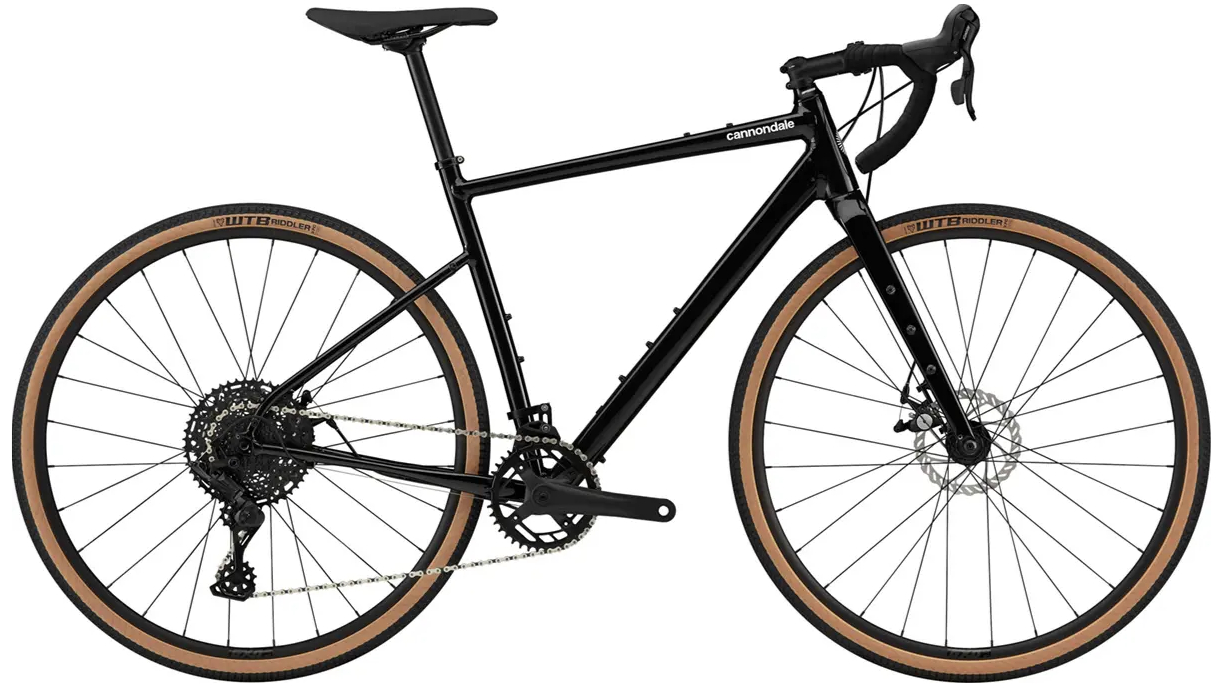
1. Cannondale Topstone 4
Specifications
Reasons to buy
Reasons to avoid
✅ You want great value for performance: The Topstone 4 delivers a confident, comfortable ride across tarmac, gravel, and trails without breaking the bank.
✅ You’re after a carbon fork and wide gear range: Smooths out the ride and gives you options for climbing or picking up speed.
❌ You need sharper road speed: The setup favours off-road versatility over pavement efficiency, and mechanical disc brakes aren’t as powerful as hydraulics.
Cannondale has once again refreshed its Topstone range of alloy gravel bikes. The cheapest version—the Topstone 4—features a full carbon fork a 1x setup and enough mounting points to carry anything. We think it's a solid all-rounder and has truly earned the 'best overall' entry-level gravel bike.
The handlebars and overall geometry are very kind and forgiving for beginner riders. While its SmartForm C2 Alloy frame isn't light (weighing over 10kg/22lbs), it does offer fantastic stability across all types of terrain. The 'OutFront' geometry which places the front wheel further forward adds further stability and confidence. The carbon forks also help reduce vibration.
The Topstone 4 comes with Cannondale’s own GXD 1.0 wheels and Vittoria’s Terreno Dry 35mm tyres. The bike can fit up to 45mm tires and some riders might prefer to go bigger, but we think this is a perfect place to start your gravel bike journey.
On the whole, we think this is an excellent option for a first gravel bike or a bikepacking as it has more than enough mounting points.
Best Value
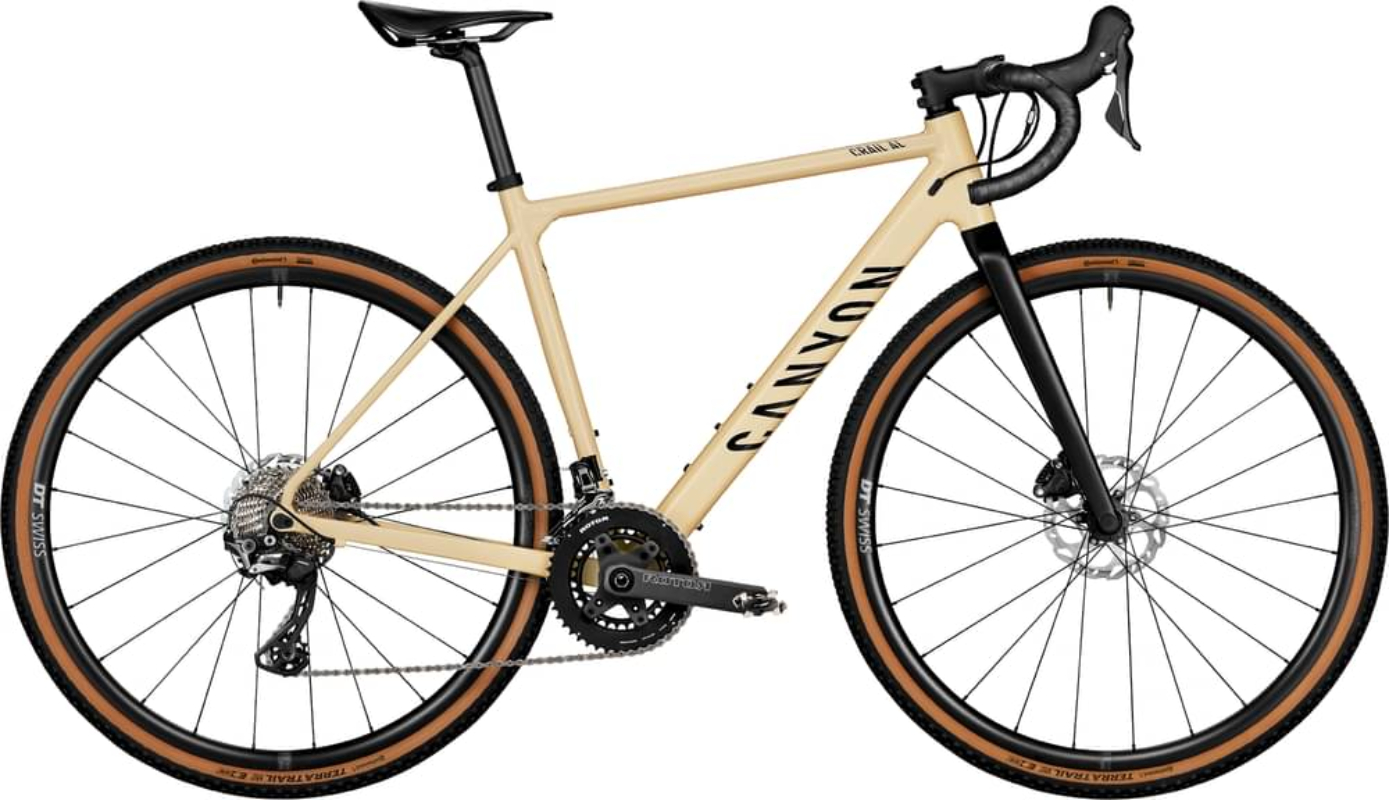
2. Canyon Grail 7
Specifications
Reasons to buy
Reasons to avoid
✅ You want reliable components: Thanks to a Shimano GRX RX810 drivetrain and DT Swiss wheels, the Grail 7
provides seamless shifting and solid durability.
✅ You’re new to gravel and want versatility: The Grail 7 is stable, comfortable and a great option for weekend rides or light bikepacking.
❌ You’re chasing the lightest build possible: The aluminium frame and spec can feel a bit heavy on steeper climbs.
The Canyon Grail 7 sits at the top of Canyon’s aluminium gravel range and we think it offers outstanding value for riders looking to dip their toes into gravel riding with a high-quality spec. After testing the Grail 7 over a mix of smooth tarmac, forest tracks, and gravel trails, we were seriously impressed by how capable and confidence-inspiring it felt.
Thanks to the combination of a 46/30 chainset with an 11-34 cassette, the Grail 7 can spin up almost any gradient you're likely to encounter as a beginner gravel cyclist. In testing, we found the addition of Canyon's SP0043 VCLS CF carbon seat post enables the rear end of the bike to soak up some of the terrain chatter and smooth out the ride, while the aluminium HB 0063 handlebar keeps the cockpit simple and minimal.
On the whole, we think this bike offers excellent value, perfect for newcomers looking to start their gravel bike journey.
Best for women
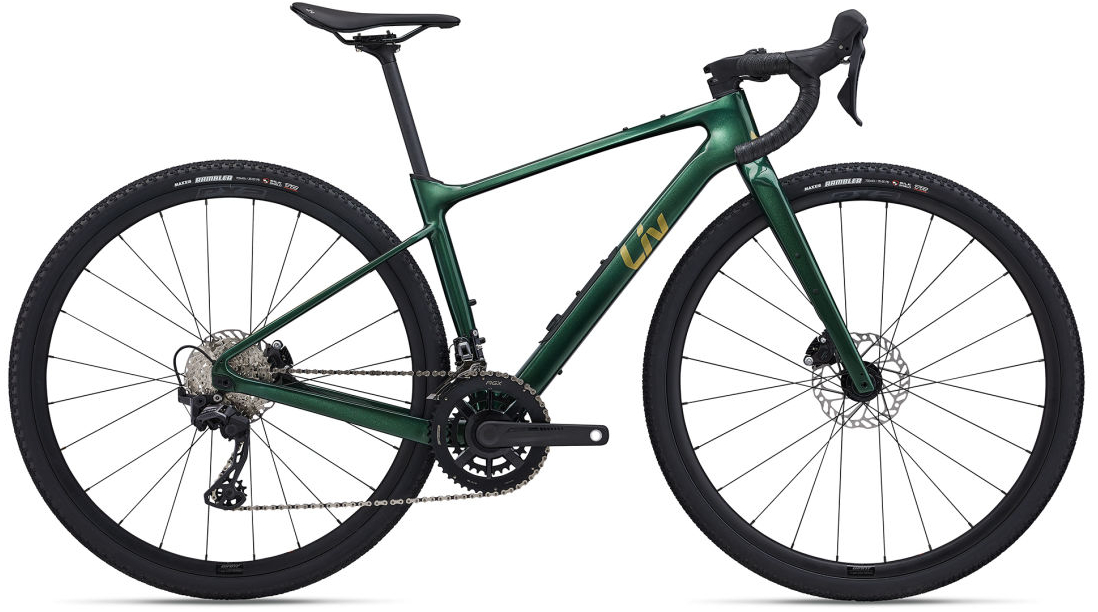
Specifications
Reasons to buy
Reasons to avoid
✅ You want a women-specific gravel bike with premium geometry: The Devote Advanced 2 is designed using real-world body geometry data to offer women riders a better fit and ride feel.
✅ You appreciate high-end spec and value: The Devote Advanced 2 comes tubeless-ready out of the box with builds like SRAM Force eTap AXS or Shimano GRX.
❌ You prefer aggressive cockpit setups: The handlebar flare is more conservative than some riders might prefer for off-road control.
The Devote Advanced 2 is designed using real-world geometry data specific to female riders. From the moment we hit the trail, that thoughtful design translated into a ride that felt natural and balanced.
During testing, we found the Devote Advanced 2 to be impressively versatile. The mix of Shimano GRX components (from the 400, 600, and 800 series) delivers solid shifting and braking performance without pushing the price sky-high. The build options across the range also mean there’s something for every type of rider. We tested the mid-tier Advanced 2, but there’s also the Advanced Pro with SRAM Force AXS if you want something more race-oriented, or the Advanced 1 with a dropper post for more aggressive, trail-style gravel riding.
Our only qualm was that we did find the handlebar flare slightly conservative compared to some more adventure-leaning bikes, and the stock tyres could use a bit more grip in the wet. But overall, the Devote Advanced 2 impressed us with its comfort, confidence, and versatility.
Check out our review of the similar Liv Devote Advanced Pro for more detail.
Best for bikepacking
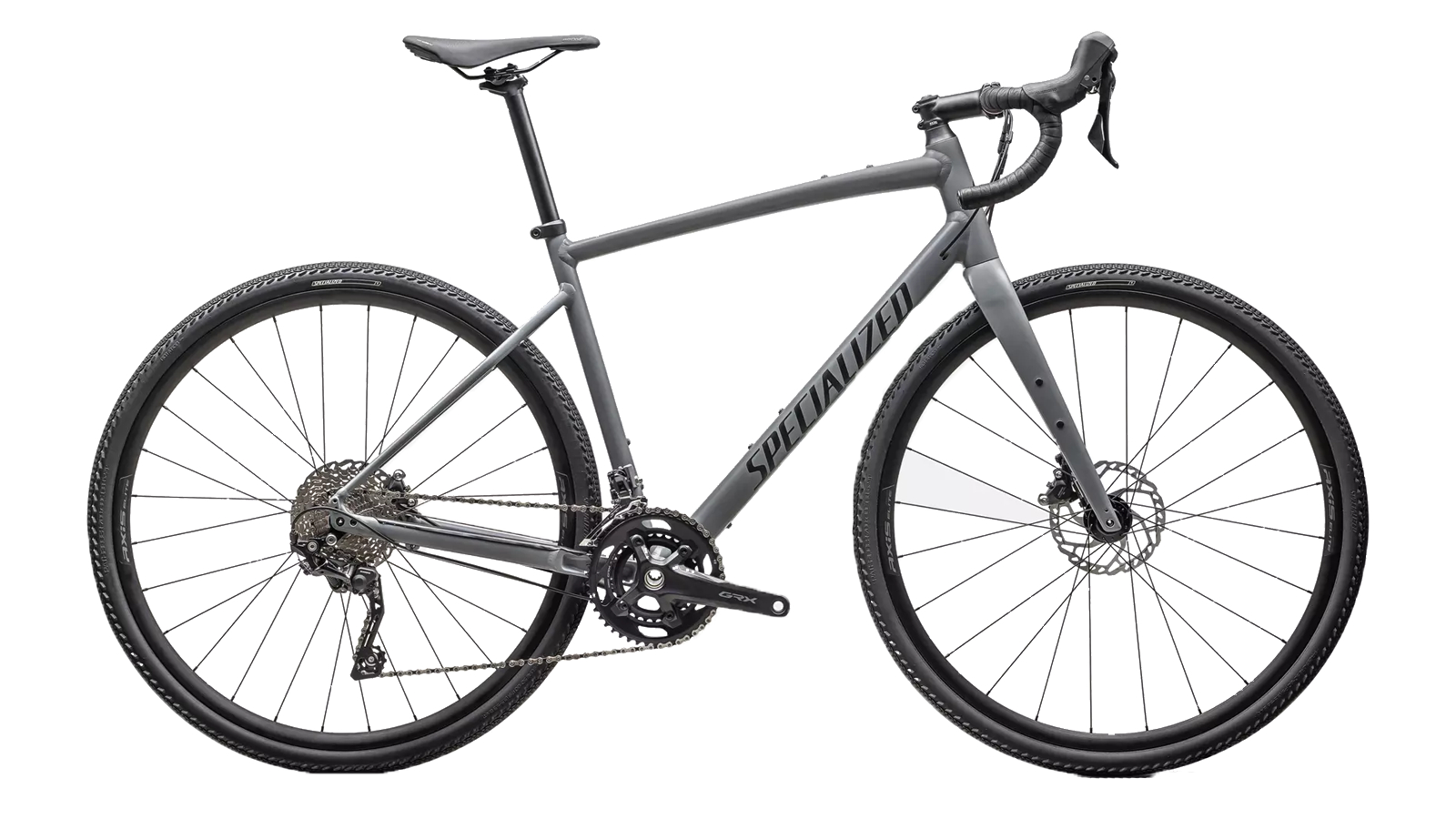
4. Specialized Diverge Elite E5
Specifications
Reasons to buy
Reasons to avoid
✅ You want a highly versatile gravel bike that can handle a bit of everything: The Diverge Comp E5 is well-equipped for fast gravel, back roads, and commuting right out of the box.
✅ Front-end comfort matters to you: The Future Shock suspension is a rare feature at this price point and offers extra damping over rough terrain.
❌ You’re a terrain-specific rider: Jack-of-all-trades performance might fall short for riders who want sharp handling on trails or road-race speed.
Specialized's Diverge stands out as one of the few gravel bikes with 'suspension’ with its front-end Future Shock system making this a fantastic option for tackling more treacherous off-road terrains. Essentially, the Future Shock is a semi-integrated dampening system that gives up to 20mm of ‘compliance’ to smooth the feel of the bars on the rough tracks and trails.
The Diverge features an E5 alloy frame with a FACT carbon fork and rack mounts for pretty much every eventuality—perfect for bike packing over longer distances. In total, there are six pairs of bottle or luggage mounts on the frame and forks, and ones for front and rear guards too.
It's safe to say the Diverge Comp E5 is capable in all kinds of gravel and off-road situations but right out of the box, it's clear the build would thrive in back road and fast gravel trails. Switching the tyres to tubeless would be an excellent upgrade for more off-road fun.
Best Ride
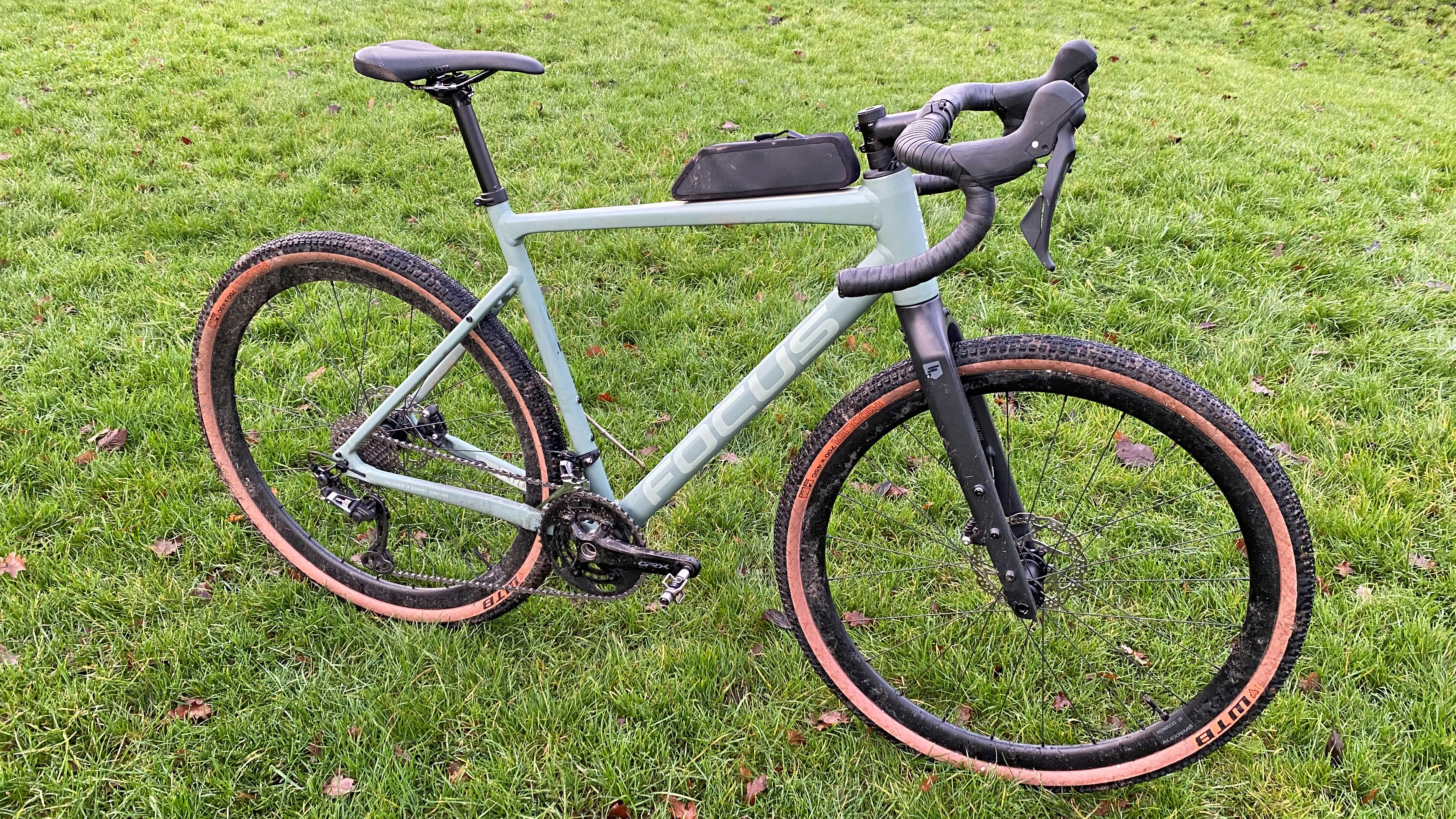
Specifications
Reasons to buy
Reasons to avoid
✅ You want a smooth-riding, versatile gravel bike: Comfort-focused geometry and ride quality make it ideal for long adventures and everyday gravel cruising.
✅ You’re after great value: Offers a well-rounded spec and capable ride feel at an approachable price point.
❌ You’re chasing low weight and race speed: The Atlas 6.8 is on the heavier side compared to more performance-oriented gravel bikes.
Focus hasn’t tried to reinvent the gravel bike with the Atlas 6.8. Instead, it’s created a smooth-riding, versatile bike that prioritises comfort, practicality, and all-round usability. Naturally, we were eager to put it through its paces on a mix of terrain to see how it held up across longer endurance rides, gear-heavy adventures, and weekend cruising.
Right away, what stood out was just how composed and forgiving the ride felt. The aluminium frame and carbon fork deliver a stable, confident ride, especially on rougher terrain where the comfort-focused geometry really shines. It’s not the lightest bike in the world, but it’s impressively planted and efficient—especially at this price point.
What sets the Atlas 6.8 apart from similarly priced options is its future-proofed versatility. During testing, we appreciated the abundance of mounting points for bottles, bags, and racks, which makes it an ideal candidate for bikepacking. It's also compatible with both a suspension fork and dropper post, giving you room to upgrade if you plan to take on gnarlier trails down the line.
Sure, it’s not a race rocket—but that’s not the point. The Atlas 6.8 is built for riders who want to explore more, carry more, and ride further without worrying about finesse or fragility. It’s a tough, confidence-inspiring gravel bike that’s just as happily loaded up in the wild as it is cruising local fire roads.
Check out our review of the Focus Atlas 6.8 for more information.
Best adjustable
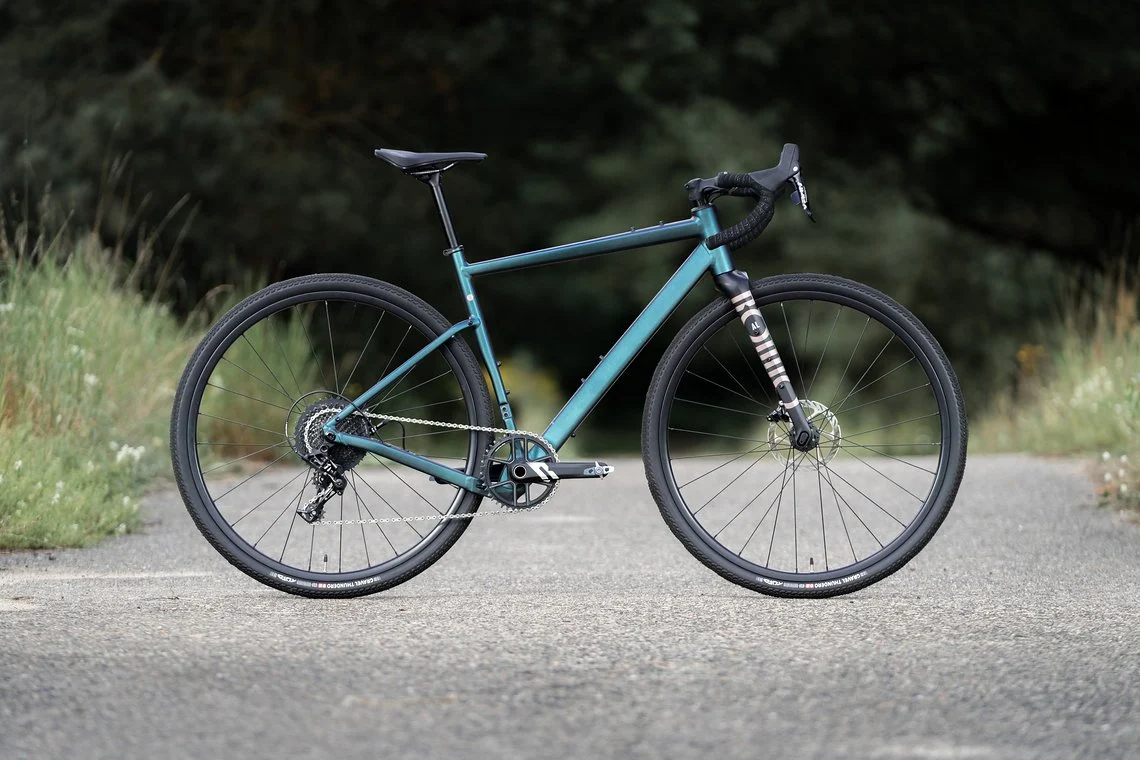
6. Rondo Ruut AL3
Specifications
Reasons to buy
Reasons to avoid
✅ You want adjustable geometry for different ride styles: The Ruut’s unique fork lets you switch between a stable upright setup and a more aggressive, racy position.
✅ You appreciate a wide range of build and wheel options: Available in aluminium, carbon, steel, and titanium, with 700c or 650b compatibility.
❌ Fiddly geometry swap: Some riders might find the adjustable geometry more effort than its worth
Rondo offers the Ruut in just about every configuration you could ask for; carbon, steel, titanium, and this more budget-friendly aluminium version. For us, the real standout feature is the adjustable geometry fork, which we found to be more than a gimmick. Whether you’re aiming for upright stability on rough trails or a lower, racier position for speed on smoother gravel, the Ruut’s twin axle positioning lets you dial in your ride feel with ease.
We tested the AL2 model and appreciated how composed it felt on varied terrain. With clearance for wide tyres and the ability to switch to 650b wheels, the Ruut AL2 gives you flexibility without locking you into one riding style. While the brakes aren’t fully hydraulic on this build, they performed well enough for general gravel and light off-road use. For riders who like the idea of customising their ride position without diving deep into fit tweaks or new components, this system really adds value.
It’s not a pure race machine, nor the lightest bike on this list, but for riders looking for a fun, adaptable gravel platform at a reasonable price, the Rondo Ruut AL2 delivers with character to spare.
Most affordable
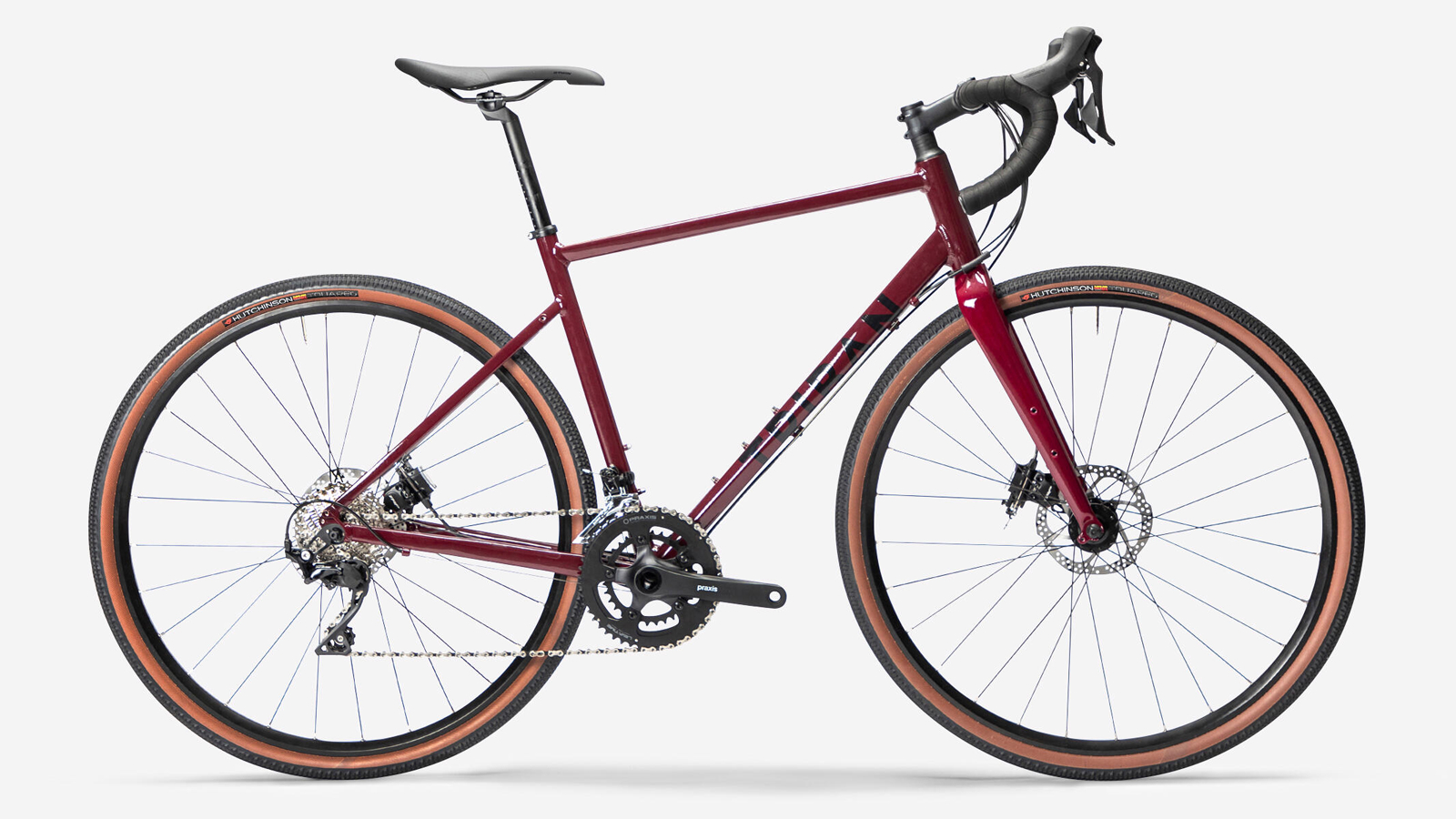
7. Triban GRVL520
Specifications
Reasons to buy
Reasons to avoid
✅ You’re ready to go tubeless: The wheels and Hutchinson tyres are tubeless-ready—add valves and sealant.
✅ You want great value for money: Despite the affordable price point the GRVL 520 features a alloy frame, carbon fork, Shimano 105 derailleur, hydraulic brakes and tubeless ready wheels.
❌ You want to easily buy a bike: Limited availability may mean bikes are not available to buy.
❌ You want bolt thru axles: The GRVL 520 still uses out dated quick release axles which gives a flexier ride feel and limits future upgrade compatability.
We think Decathlon's Triban GRVL520 is a solid entry-level gravel bike that offers impressive value for money, which is why you may struggle to get your hands on one. It has an alloy frame and carbon fork, a solid entry level spec sheet plus there's ample tyre clearance and fender and rack mounts too.
We were impressed to see that Decathlon has specced 11-speed Shimano 105 with a subcompact crankset. On top of that, the GRVL520 comes complete with tubeless-ready wheels and Hutchinson tyres—all you need is valves and sealant to set up tubeless.
Best for versatility
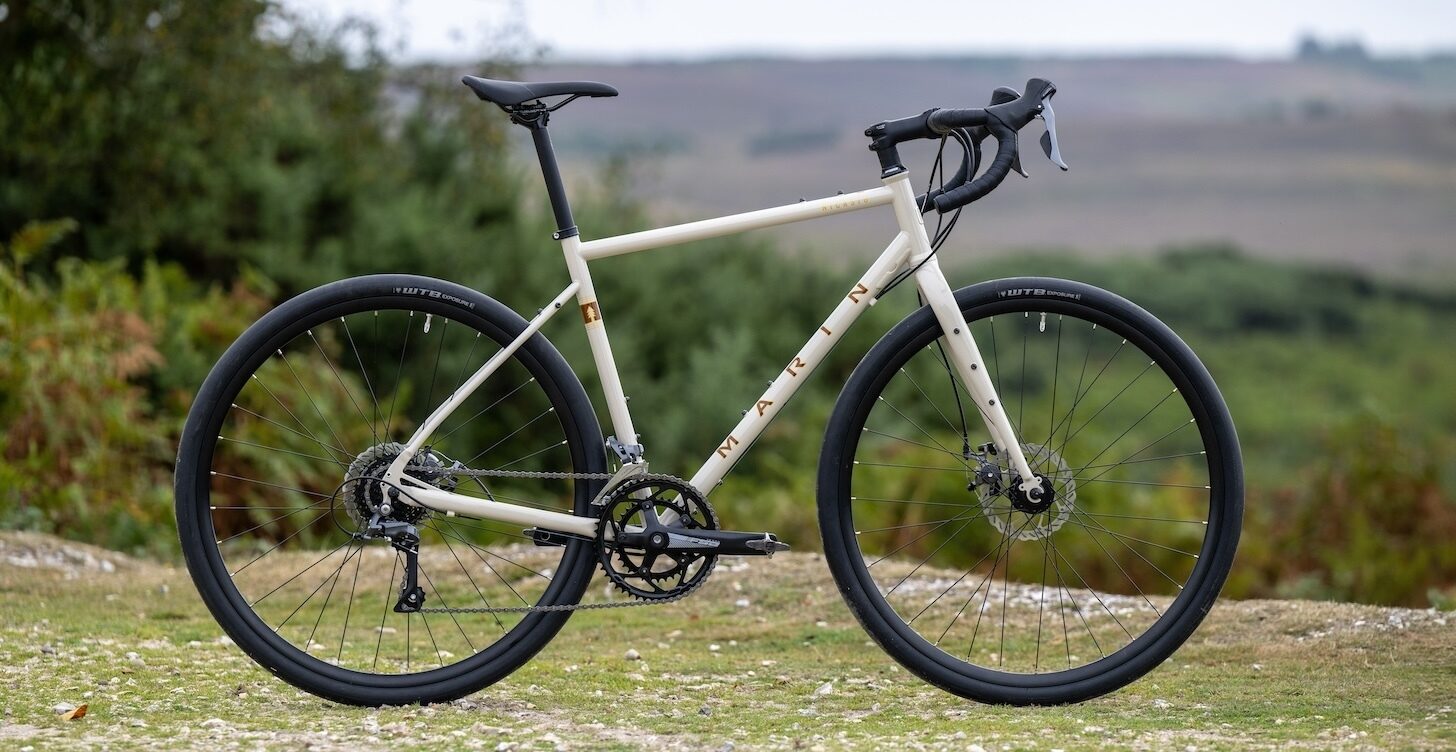
8. Marin Nicasio 1
Specifications
Reasons to buy
Reasons to avoid
✅ You want a versatile steel frame for mixed-surface riding: Built for comfort and durability, the steel construction is super reliable.
✅ You’re looking for a capable commuter or light tourer: With rack and fender mounts, plus bottle bosses under the downtube and fork bosses, it’s great for load-lugging and everyday utility.
❌ You want maximum tyre clearance: There are gravel bikes with wider clearance than the Nicasio’s 47mm max in 650b.
The Marin Nicasio 1 is a fantastic option for both on and off-road adventures, whether you're crossing countries on a once-in-a-lifetime adventure or crossing the city as part of your daily commute. There are rack and fender mounts for storage on both commutes and longer rides as well as the option to carry two or three bottles so you can stay hydrated.
It comes kitted out with 8-speed Shimano Claris gearing and a good spread of gear ratios. Its gears are above 1:1 we still think this bike is great for casual off-roading. Plus, the mechanical disc brakes will keep you stopping reliably whatever the weather.
For the same price, the Nicasio 1 offers a choice of a step-through frame as well as a standard top tube option.
How to choose
How to choose the best entry level gravel bike?
Gravel bikes are incredibly versatile but with that versatility comes an overwhelming abundance of choice and it can be difficult to pinpoint exactly what is the best gravel bike for your needs. With that in mind, we'll break down some crucial factors to consider when purchasing your entry-level gravel bike...
What should I look for in an entry-level gravel bike?
• Frame material: Typically, most entry-level gravel bikes will be constructed with aluminium. Put simply, it's light, durable and affordable. Some gravel bikes. Aluminium is the most common material at entry level, it's light, durable, and affordable. Some bikes—like the Triban GRVL520—also come with carbon forks to reduce front-end vibration and save weight.
• Tyre clearance: Wider tyres (40–50mm) offer more comfort and control off-road. If you’re planning to ride gravel trails or fire roads, aim for clearance of at least 42mm.
• Mounting points: The best entry-level gravel bikes come with mounts for racks, mudguards, and multiple bottles, making them ready for commuting, touring or bikepacking.
• Drivetrain: Look for a wide gear range. A 2x setup offers more fine-tuned control, while a 1x drivetrain is simpler and great for off-road adventures. If you’re riding steep hills, we'd recommend a gravel bike with a sub-1:1 gear ratio.
What type of gravel bike should I buy?
Gravel bikes can be used in a variety of different riding contexts. Therefore, the best gravel bike ultimately depends on what you'll be doing most:
• Bikepacking and touring: Durability, mounting options and comfort are the name of the game here. Steel frames are definitely recommended and we'd suggest fitting wider tyres too.
• Commuting: Look for bikes with rack and fender mounts, puncture-resistant tyres, and a more upright geometry for comfort and visibility. It might be worth considering step-through options too.
• Mixed terrain/adventure riding: You’ll want larger tyre clearance, wide-range gearing, and stable geometry for better control on loose surfaces. The Marin Nicasio 1 is a great option that gives you the best of both worlds.
Everything you need to know
Are all gravel bikes the same?
Gravel bikes are increasingly divergent, so it's worth considering what you might want to use your entry-level gravel bike for.
At the pointy end of the gravel bike market are gravel race bikes. These will offer a little more tyre clearance than the best road bikes, although, with the ever-increasing space between the stays of road bikes, even that isn't a given.
But a gravel race bike will have a more stable geometry than a road bike, for a less edgy ride. It will also seat you in a more comfortable ride position, as gravel races are typically over long distances.
At the other end of the spectrum are gravel bikes designed for bikepacking. They'll usually have very wide tyre clearance, and low gearing and will often be equipped with 650b wheels for a more comfortable ride when loaded up.
Should I buy something specific or versatile?
When buying an entry-level gravel bike, it's common not to have a deep understanding of the type of gravel riding you'll prefer. You're new to this after all. So if you're not sure what you're going to want to do on your gravel bike, it's worth looking for a bike that can handle a range of duties from bikepacking and racing through to setting up with mudguards and a rack for commuting.
Most entry-level gravel bikes are designed to handle all of the above, but it's worth checking that you can mount everything you might need if you're contemplating trying bikepacking. Likewise, make sure that there's plenty of tyre clearance if you might want to try out more challenging terrain. If where you live gets muddy over the winter, extra clearance may also help keep you rolling more easily and avoid mud accumulation on your frame.
What wheel size is best for my first gravel bike?
Start looking for a gravel bike and it won't take long before you find yourself presented with a choice of wheel size. When it comes to the best road bikes it's almost unheard of to find anything other than 700c wheels. Start looking at off-road frames and there's a lot more variability. 650b, also sometimes referred to as 27.5-inch wheels, are a common option and some frames work with both options. How do you decide which is best for you?
The simplest breakdown is that a 700c wheel is more desirable for less technical riding and a 650b wheel works better for rougher riding. It's actually much more nuanced, and less critical than that might sound but that's an easy place to start. You can do a lot to fine-tune your set-up by choosing the best gravel tyres for the type of riding and the conditions you expect.
What material should my first gravel bike be made from?
The vast majority of bike frames, gravel or otherwise, use carbon or aluminium for the frame. To a lesser extent, you can also find titanium or steel frames on the market and we've highlighted the unique magnesium alloy Vaast above. Like wheel size, each material has advantages but their downsides won't hold you back.
The least common options are steel and titanium. Steel was at one point the only option for bike frames but as lighter, stiffer, options became available steel nearly disappeared. In today's world steel and titanium find their place mostly with small custom builders.
Both metals flex in a predictable fashion and those who know how to take advantage of that can tune a frame. Titanium is lighter but it's also more expensive and harder to work with. Steel is an excellent choice if you plan to be in remote areas of the world. It's heavier but it's easy to work with and any craftsman who can weld an axle can fix a broken steel frame.
How many chainrings is best for my first gravel bike?
Commonly you will see this referred to as 1x or 2x but call it what you want, it refers to how many gears you have available. 1x11 for example would mean 11 total gears while 2x11 would be 22. More is not always better though so it's not a clear-cut decision, as there's overlap between the gear ratios on the two rings in a 22-speed set-up, so the actual discrete number of gear ratios you get may not be many more than with a single ring, although you may have smaller jumps between them mid-range.
The primary argument in favour of 1x gearing is simplicity. Many people will tell you it's less weight and less to break but in use, those are minimal concerns. What you will notice, on every ride, if you choose a 1x drivetrain is the simplicity of not worrying about the front chainring.
If you want easier gear, move up the cassette and if you need harder move down. It's especially handy when the riding gets rough and you've got a lot going on. Sounds pretty good, so why would anyone ever choose 2x?
The extra gears available with 2x make it easier to find the perfect gear. Two chainrings in the front allow for both more range and less space between gears. Mud clogging can be exacerbated by a front derailleur though, which can stop working properly if this gets really bad.
Bikepackers who need exceptionally easy gear ratios for carrying supplies up steep grades often want 2x, or even 3x, to find enough range. Fast riders who spend a lot of time racing might also want to optimise cadence with a 2x setup
Why not choose the lowest priced entry-level gravel bike?
At the cheaper end of the market, gravel bikes often come equipped with road-going groupsets. These may not give you the gear range to tackle off-road steep sections, so you might find yourself walking sections that a bike with a lower-ratio gravel groupset would let you ride.
Likewise, cheaper gravel bikes might have cable-operated mechanical rather than hydraulic disc brakes. You'll also get lower-spec wheels and tyres may not be tubeless-ready. Tubeless is pretty much essential for gravel riding, to lower the risk of punctures and eliminate pinch flats.
So the cheapest gravel bike isn't necessarily the best entry-level gravel bike option; you want a bike that does the gravel bike basics well but that you'll be able to live with and potentially upgrade as you get more into gravel riding.
The challenge is that when starting out it's hard to justify spending a lot of money on something you aren't yet sure you'll enjoy enough. Is gravel riding going to be a lifelong passion worthy of spending serious money on, or a fleeting hobby not worth the big investment? Are you going to gravitate more towards gravel racing or bikepacking? Or maybe you'll end up preferring singletrack you can only barely handle on a drop-bar bike. You won't know until you spend some time trying things out.
Of course, price matters but try not to make it the only goal; instead, try to focus your search on versatility. As you gain more experience with gravel cycling, you'll be able to look for a more niche bike that matches your interests, but in the beginning, look for an all-rounder that can work for whatever you want to try. If you stay flexible, that first bike won't hold you back.
How we test?
At Cyclingnews, we put gear through real-world conditions to help you make informed decisions. For this entry-level gravel bike guide, we tested 8 bikes over hundreds of miles across a wide range of terrain, from loose singletrack and fire roads to tarmac and urban trails. We paid particular attention to factors that matter most to entry-level riders such as frame quality, gearing range, tyre clearance, comfort, and long-term versatility.
Testing is the backbone of the tech department at Cyclingnews and how we test is taken seriously, so read on to find out more.
The latest race content, interviews, features, reviews and expert buying guides, direct to your inbox!
Josh hails from the Pacific Northwest of the United States but would prefer riding through the desert than the rain. He will happily talk for hours about the minutiae of cycling tech but also has an understanding that most people just want things to work. He is a road cyclist at heart and doesn't care much if those roads are paved, dirt, or digital. Although he rarely races, if you ask him to ride from sunrise to sunset the answer will be yes.
Height: 5'9"
Weight: 140 lb.
Rides: Salsa Warbird, Cannondale CAAD9, Enve Melee, Look 795 Blade RS, Priority Continuum Onyx

